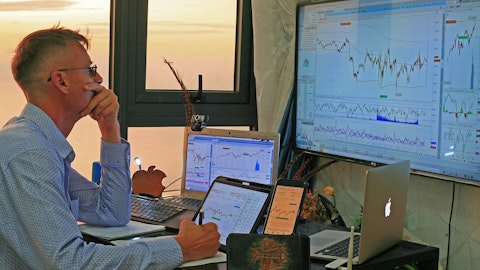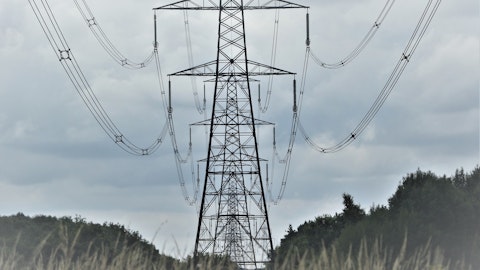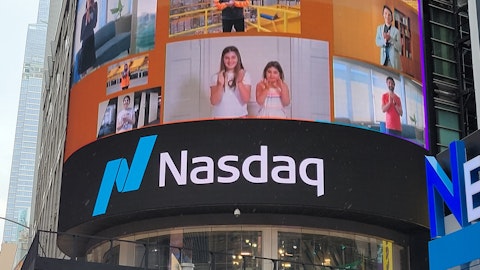As we kind of think about our rate case cadence in New Mexico on that forward-looking element associated with it and kind of head down that path. And then one of the questions you always ask is what’s upside to the upside. And in Texas, I mean, there’s things that we kind of hit on in our – as we kind of talked when we’re going through the presentation, but the temporary mobile generation isn’t in our capital plan. That would be a potential that’s out there as well as the WesTex planning process, which is we’re in the hard core center of that WesTex planning process, ERCOT is in the process of designing what’s needed at this point, and then we’ll have the opportunity to weigh in associated with that.
Julien Dumoulin-Smith: Got it. And the upside and the upside here, especially with the mobile gen, et cetera. I mean is that – that’s a ’24 item that you would expect to kind of come more into view?
Don Tarry: You would see a lot of these that kind of ramp up as they get later in the period, and I think that’s the important piece. But the mobile generation, the rules probably will be defined. They haven’t been defined yet. They’ll probably be defined by the end of the year and then you’ll be able to see kind of what’s added at that point in time.
Julien Dumoulin-Smith: Wonderful. All right, guys. Thank you so much. Appreciate it. Best of luck. We’ll see you soon.
Pat Vincent-Collawn: Thank you.
Operator: The next question is from Anthony Crowdell of Mizuho. Please go ahead.
Anthony Crowdell: Hi. Good morning. Just kind of – great, you guys are back. Just wanted to jump on some of Julien’s questions. If I could take a part one, if I think if you move the earnings growth from 5% to 6% to 7%, rate base growth stayed the same and no change in equity needs. What was the driver from going from 5% growth to 6% to 7%? It’s just a roll forward to one of the outer years that, I guess, Julien was hitting on? Or is it an improved earnings or ROE in the plan?
Pat Vincent-Collawn: Well, I’ll let Lisa go through the details, Anthony, but part of it was just we reset to 2024, right? And then we were able to optimize some of the regulatory lag and some of the rate cases and the ROEs in there. So I’ll let Lisa talk a little bit more, but that was really the main couple of drivers.
Lisa Eden: Yes, I agree, Pat. The main driver is the rebasing of 2024. But we’ve also gotten more certainty after the PNM rate case, and so we’ll be able to put forward to plan, both in terms of financing and also solidified as the rate base growth that you see here. And that’s really where we arrived to the 6% to 7%.
Anthony Crowdell: Great. And then I know you guys are focused on the balance sheet. I know you have a targeted payout ratio. I’m just wondering, do you have a targeted FFO to debt ratio?
Lisa Eden: Yes. So our objective is to stay above our threshold, Anthony and our threshold is 13% at Moody’s and 14% at S&P.
Anthony Crowdell: Great. And then just lastly, Pat, if I could put you on the hot seat here. When we roll back the clock a couple of years and think of the driver of maybe what got the company and the Board to maybe seek a larger platform in that merger. I mean, do those conditions still exist today? I mean the company is a great plan that they’ve unveiled and it really highlights the growth in Texas. But just wondering, when you think about what the drivers that maybe caused the company to look for a bigger platform, maybe a bigger balance sheet and then when you look at it today?
Pat Vincent-Collawn: Yes. And Anthony, what we’re sort of here in our deep breath phase because it’s been about, what, five weeks since the deal broke. And – but what I would tell you that I believe and the Board believes and the management team believes is that the size is still important in this world and the opportunity to access cheaper capital, to access material supplies, employee opportunities is still there. We frame that strategic rationale up against market conditions, right? We look at where interest rates are and equity values are and then we need to see – I think anybody would need to see a fact pattern from the commission in New Mexico. They’re kind of changing the way that they are thinking. So when the Board talks about it, that’s what we’re balancing.
Anthony Crowdell: Great. Thanks so much for taking my questions. And appreciate the detail.
Pat Vincent-Collawn: Thank you, Anthony.
Operator: Our next question is from Ryan Levine of Citi. Please go ahead.
Ryan Levine: Good morning. Hi, everybody. In terms of the $6.1 billion CapEx outlook, I mean, clearly, you’re pursuing a number of incremental investment opportunities that could bring that higher. Is there any way to provide some color around how big that number can be in the backdrop of the regulatory and commercial opportunities you’re pursuing?
Don Tarry: I mean I’m not going to throw a number out, but I will tell you kind of the categories that are associated with it, and they’re primarily in Texas and they’re around the temporary mobile gen that we talked a little bit about. Again, we need to see the plan defined or the rules defined and then we’ll have a better feel. The system resiliency, right now, we have $450 million in the capital budget. I will tell you that’s a conservative number based on what we think that grid resiliency study will come out to be. West Texas planning. It’s kind of in that process of – and the way that works is customers provide their – what they anticipate their load to be to ERCOT and then ERCOT kind of has to develop what is needed. The great thing about that is that’s in West Texas in the core of our area.





